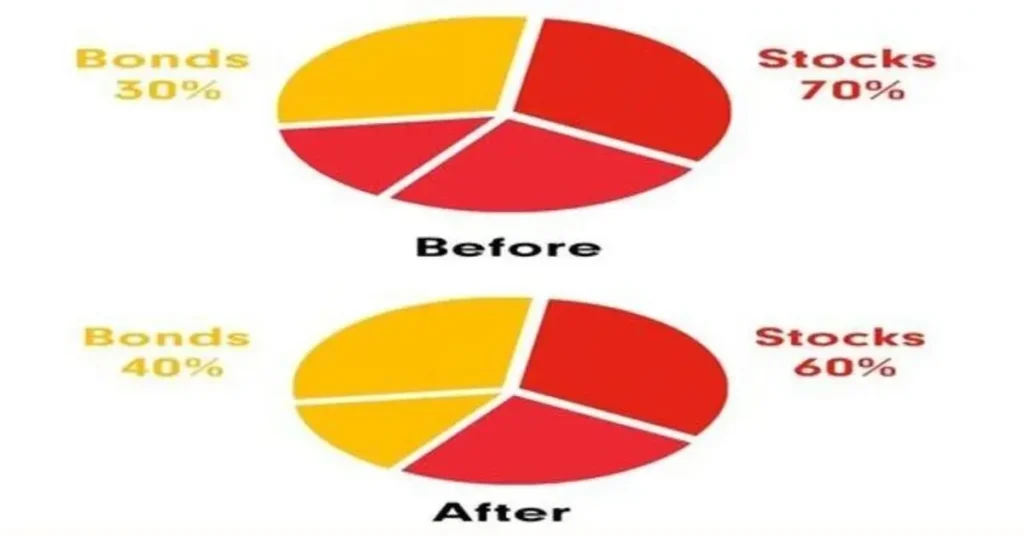Investing is a fascinating journey that allows us to not only grow our wealth but also expand our knowledge about the financial world. In this article, we’ll share 10 facts about investing that may surprise you, educate you, and perhaps even change the way you approach your investing journey. As we delve into these insights, our goal is to provide you with valuable information that will help you make more informed decisions and maximize your returns.
We understand that the world of investment can be overwhelming, with countless options and strategies to choose from. That’s why we’ve compiled this list of 10 essential facts that every investor should know. We’ll cover fundamental concepts like risk and return, the importance of diversification, and how time can be your greatest ally, along with several lesser-known tidbits to help you gain a deeper understanding of the investment landscape.
Join us as we explore these 10 facts about investing, and let us be your guide to not only enrich your financial knowledge but also empower you to take control of your financial future. Remember, knowledge is power, and the more we know, the better decisions we can make to achieve our investment goals.
10 Facts About Investing: The Basics of Investing
In our journey of uncovering 10 facts about investing, let’s first understand the basics. Investing involves putting money into assets, such as stocks or bonds, to potentially grow over time. Becoming a well-informed investor is crucial for financial literacy and long-term success.
The stock market is where investors buy and sell shares of publicly traded companies. There are several major stock exchanges, with the New York Stock Exchange being one of the largest. When you invest in the stock market, you’re participating in the global economy and supporting businesses that can lead to improved products, services, and innovations.
One key aspect of investing is understanding risk. All investments carry some level of risk, which is the possibility of losing money or not achieving the desired returns. Generally, investments with higher potential returns come with higher risks. As an investor, it’s important to evaluate your risk tolerance and choose investments that align with your goals, time horizon, and comfort level.
Another essential element of investing is diversification. This means allocating your money across different assets and sectors to reduce the impact of a poor-performing investment on your overall portfolio. By spreading your money around, you lower the risk of losing it all if one investment goes south.
Lastly, it’s important to be patient and have a long-term perspective when investing. Investing is not about making a quick buck, but rather building wealth over time. Stay committed to your investment plan, and remember that it’s common for the market to experience ups and downs.
Age and Investment
In our quest to uncover 10 facts about investing, let’s take a look at the role age plays in investment strategies. When it comes to investing, our age can significantly affect the way we manage our money, plan for retirement, and achieve our wealth goals.
Younger investors, typically in their 20s, should build a financial base. At this age, the power of compound interest is in their favor – the earlier we invest, the more time our money can grow. For example, investing $10,000 at age 25 with a 5% return, compounded annually, can grow to $70,400 by age 65. At this stage, it’s wise to focus on building an emergency fund, contributing to a retirement account like a 401(k), and ensuring we have a strong foundation for financial success.
As we move into our 30s and 40s, we should diversify our investments. It’s essential to strike a balance between stocks, bonds, and other asset classes to spread risks and potential rewards. By diversifying, we can benefit from various investment opportunities, reduce the impact of market fluctuations, and maintain our wealth throughout our lifetime.
In our 50s and 60s, it’s time to shift our investment strategies. As we near retirement, it becomes crucial to preserve our capital and focus more on income-producing investments like bonds. It’s also crucial for us to reevaluate our financial plan to ensure we have secured enough retirement savings.
Finally, during our retirement years, we must manage our assets wisely. Retirement is the time when we should strive to have a well-diversified, income-producing portfolio that can preserve our wealth while providing enough income to sustain our cost of living. At this stage of life, proper withdrawal strategies and attention to tax implications are crucial to secure our financial future.
Investment Options and Their Nature

Stocks are shares of ownership in a company. When you buy stocks, you essentially own a portion of that company. The value of your stocks can grow when the company performs well, and they can pay dividends as well. The value can decrease if the company doesn’t do well.
Bonds are essentially loans you provide to a company, government, or municipality. They provide a fixed return on investment over a set period, making them more predictable and less risky than stocks. The interest rate may be lower, so the potential for returns is also lower.
Mutual funds pool money from multiple investors to invest in a diversified portfolio of stocks, bonds, or other assets. This offers investors a more managed and less risky approach to the stock market without requiring them to manage individual stocks.
Exchange-traded funds (ETFs) are similar to mutual funds but trade like stocks on an exchange. They often track an index fund, offering investors a more diverse and cost-effective way to invest their money.
Index funds are a type of mutual fund or ETF that follows a specific market index. By investing in an index fund, investors can minimize risk and management fees while achieving similar returns to the market index. They are an excellent choice for long-term investors seeking passive returns.
Real estate investing involves purchasing property to generate income or capital appreciation. This can include rental properties, commercial buildings, or real estate investment trusts. Real estate investments offer potential long-term gains and can serve as a hedge against inflation.
Lastly, investing in a business can mean starting your own company or acquiring equity in a new or existing business. This kind of investment demands significant research, time, and effort but can offer substantial rewards over the long run.
Role of Risk Tolerance in Investing
Understanding risk tolerance helps us make informed decisions about our investments, balancing risk and return. Investing is inherently risky, but different assets have varying levels of risk associated with them. For instance, stocks have higher volatility compared to bonds, while real estate investments often exhibit lower short-term volatility but higher long-term appreciation potential.
As we consider our investments, it’s crucial to take into account the relationship between risk and return. Generally, investments with higher risk are expected to yield higher returns, while low-risk investments offer lower returns. This is not a hard and fast rule, but a helpful principle to bear in mind when allocating our assets.
Determining our risk tolerance allows us to create a diversified portfolio that suits our unique financial needs. Investors with low-risk tolerance might gravitate towards conservative investment options like bonds, certificates of deposits, and money market funds. On the other hand, investors with higher risk tolerance may allocate a larger portion of their portfolio to equities, potentially earning higher returns.
The Magic of Compounding
We often hear about the magic of compounding and how it can significantly impact our investments’ growth. You see, compounding is all about earning returns on not just our initial investment, but also the returns or income we’ve already accumulated. It’s like a snowball effect—over time, your returns grow exponentially as they are continuously reinvested.
To better understand this concept, let’s look at a simple example. Suppose you invest $1,000, and it earns a steady 7% annual return. In the first year, you would earn $70 (7% of $1,000). If you reinvest that $70, your total investment becomes $1,070. In the next year, you’d earn 7% on the new amount ($1,070), which comes to $74.90. This cycle continues, and as time goes on, your investment grows at an increasingly faster pace.
Now, let’s say you have two investors starting with a similar amount, but one investor begins ten years earlier. Given enough time, the earlier investor can end up with an exponentially larger sum due to the power of compounding.
Here are some key points to remember about compounding:
- Time is essential to maximize the benefits of compounding. The longer you let your investments grow, the more significant the impact of compounding.
- Regular contributions can further enhance the compounding effect. By continuously adding to your investment, you create a larger base on which your returns can compound.
- Earning higher interest rates or returns can lead to faster compounding. Make sure to balance the risks and rewards of your investments.
Diversification and Portfolio Balance

We all have heard the saying, “Don’t put all your eggs in one basket.” In the context of our 10 facts about investing, diversification and portfolio balance are crucial for long-term success. In this section, we’ll explore what diversification is, various strategies to diversify your investments, and how a balanced portfolio helps manage your risks.
Diversification is the practice of spreading your investments across a range of assets to limit your exposure to any one type of asset. This technique is designed to reduce the volatility of your portfolio over time. By owning a variety of different financial instruments, economic sectors, and geographic regions, you can soften the impact of a single underperforming investment with the performance of others.
Now that we understand the importance of diversification, let’s discuss some strategies to achieve a balanced portfolio. A popular method is to mix various asset classes, such as stocks, bonds, and cash equivalents. You can further diversify your stocks by selecting those from different sectors, industries, and market capitalizations. Another valuable approach is to include international investments, giving exposure to markets outside your home country.
Tips for Diversification:
- When investing in stocks, consider a mix of large-cap, mid-cap, and small-cap companies.
- Bond investments can be diversified by investing in government, municipal, and corporate bonds.
- Allocate some portion of your portfolio to global markets.
- Consider investing in alternative assets, such as real estate or commodities, to achieve further diversification.
Remember, balancing your investment portfolio is not a one-time activity. It’s essential to regularly review and rebalance your portfolio to ensure it aligns with your financial goals and risk tolerance. Market fluctuations and changes in your circumstances can impact your initial asset allocation over time.
How Fees and Costs Impact Returns
One crucial factor in determining the real value of our investments is the fees and costs associated with them. These can nibble away at our returns, significantly impacting the overall value of our portfolio over time.
For instance, imagine an investment portfolio with a 4% annual return over 20 years. If this portfolio has ongoing fees of 0.25%, 0.50%, or 1%, the difference it makes in the overall value is astounding. A comparison chart shows that a lower fee of 0.25% could result in thousands of extra dollars in our portfolio, compared to a 1% fee.
These costs come in various forms, such as transaction fees, advisory fees, or expense ratios for mutual funds and exchange-traded funds (ETFs). It’s critical for us to be aware of these expenses, compare different investment options, and minimize the impact on our returns.
Sometimes, fees can be challenging to notice. They might be deducted directly from our investments or listed in the fine print of a prospectus. As investors, we should always scrutinize the costs embedded in our investments.
There are several ways we can tackle fees and costs. For instance:
- Choosing low-cost investment options: Low-cost index funds or ETFs can offer solid returns with significantly lower fees, compared to more expensive actively managed funds.
- Negotiating fees: If we’re working with a financial advisor, it’s possible to negotiate a lower fee. Remember, every dollar saved in fees adds to our returns.
- Reviewing our portfolio periodically: It’s essential to review our investments, prune high-cost assets, and reallocate money to more cost-efficient choices.
Understanding Capital Gains and Dividends

Capital gains are the profits you make when you sell an investment at a higher price than its original purchase price. For example, if you buy 100 shares of stock at $10 each and later sell those same 100 shares at $50 each, your capital gain would be $4,000 – this represents the difference between what you made and what you paid.
On the other hand, dividends are a way for companies to share their profits with their shareholders. Typically paid on a regular basis, dividends can be in the form of cash, additional shares, or other types of assets. Dividends are usually distributed from a company’s net income, meaning the amount of money left over after all expenses have been covered.
There are two main types of dividends: regular dividends and special dividends. Regular dividends are paid periodically and are typically more predictable than special dividends, which are a one-time distribution of company profits. When receiving dividends, it’s important to note that they can be taxed differently depending on their classification.
Exploring Unconventional Investment Avenues

Cryptocurrency has recently gained popularity as an investment alternative. With digital currencies like Bitcoin and Ethereum making headlines, many investors are drawn to their potential for high returns and diversification. It’s essential to understand that cryptocurrencies are volatile and can experience significant fluctuations in value. Investing in cryptocurrencies should be done with caution and proper research.
When it comes to precious metals, gold and silver have long been considered safe-haven investments in turbulent times. These metals can act as a hedge against inflation and currency fluctuations. Additionally, other metals such as platinum and palladium have gained attention due to their industrial applications, making them potential investment options as well.
Finally, land has been a traditional store of value and remains a smart option for those looking to diversify. Investing in real estate includes purchasing residential or commercial properties, farms, timberland, and even undeveloped land. Before investing, it’s essential to research market trends and understand the implications of owning and managing land-based assets.
Seeking Professional Advice
There are various types of financial professionals, and choosing the right one for us depends on our own unique needs and preferences. Some of us might benefit from the services of a financial advisor, who can help us create a comprehensive financial plan, while others may find greater value in working with investment managers, who specialize in managing our investment portfolios.
Regardless of the type of professional we choose, it is important to understand that they can offer valuable insights and information on how best to manage our investment risks. By seeking their expertise, we can make more informed decisions and ensure that our investment choices align with our long-term financial goals.
Of course, one of the key considerations in seeking professional advice is our budget. We should be mindful of the potential cost of hiring a professional and weigh it against the potential benefits they can bring to our financial lives. In many cases, the fees we pay for their expertise can be more than justified by the improved investment performance and risk management they provide.
Our Opinion on 10 Facts about Investing
We’ve researched and gathered 10 facts about investing that everyone should know. These facts shed light on some key principles and trends in the investing world, providing a better understanding of how to build wealth. Let’s dive in!
Investing, when approached with knowledge and discipline, can indeed be a fruitful endeavor. For instance, 58% of Americans are invested in the stock market. This shows that a significant number of people are taking advantage of investment opportunities, aiming for financial growth.
Another essential fact is that fees matter, a LOT. High fees can eat into your returns and leave a substantial dent in your invested amount. It’s crucial to be aware of the fees you’re paying and to shop around for better deals when necessary.
Moreover, the best portfolios are often forgotten, which means it’s wise to keep a long-term perspective when investing and avoid constantly checking your portfolio. Resist the temptation to make knee-jerk reactions to market fluctuations.
Some more important facts to be aware of:
- Corrections are common in the investing world; it’s important to remain calm and have a plan for when they occur.
- Inverted yield curves are not predictive of market performance, so don’t rely on them to make investment decisions.
- Long-term capital gains can be favorable for tax purposes, helping you to preserve more of your potential returns.
A surprising revelation is that hedge funds cannot consistently beat index funds. So, instead of chasing high-fee hedge funds, consider index funds for a diversified and low-cost investment strategy.
Additionally, the Great Recession recovery may have taken about 6 years, but it’s important to note that some companies never recover. This underlines the importance of diversification, reducing risk by investing in various assets.
These 10 facts about investing serve as essential guidelines for both beginner and seasoned investors. Keep them in mind as you plan and make investment decisions, and remember to stay flexible, educated, and focused on your financial goals.
Frequently Asked Questions
When learning about the 10 facts about investing, we come across some common but important questions. In this section, we’ll address them.
What are the 10 principles on investing?
1. Set clear goals: Determine your short-term and long-term financial objectives.
2. Invest early: Benefit from the power of compounding by starting as early as possible.
3. Diversify: Spread your investments across different asset classes to minimize risk.
4. Keep costs low: Avoid excessive fees and focus on low-cost investment options like index funds or ETFs.
5. Be disciplined: Maintain a long-term investment strategy without being swayed by market fluctuations.
6. Rebalance regularly: Periodically review and adjust your portfolio to maintain your desired risk level.
7. Avoid emotional decisions: Make informed choices based on facts and research, not fear or greed.
8. Tax efficiency: Consider the tax implications of your investments to maximize your returns.
9. Stay informed: Keep up-to-date with market trends, news, and changes to understand the impact on your investments.
10. Seek professional advice: Consult a financial advisor if needed to help you achieve your investment goals.
Did you know facts about investing?
Even small amounts can add up. Consistent and early investments lead to significant growth over time.
Dollar-cost averaging is a strategy where you consistently invest a fixed amount at regular intervals, regardless of market conditions, to reduce the impact of market volatility and average out the purchase price.
Investment options like stocks, bonds, real estate, and mutual funds each have their own risk and return profiles. It’s essential to understand these before investing.
Historical performance does not guarantee future results, and past trends may not always repeat themselves.
Companies with strong ethical and environmental policies tend to perform better in the long run, as they are better equipped to manage risks and attract socially conscious investors.
I hope you found some inspiration or useful tips in our 10 facts about investing! If so, I’d love to hear your thoughts and ideas in the comments below! And if you’re looking for more insightful content, don’t hesitate to explore our other articles:
- Financial Planning For Seniors – Guide To Managing Retirement Finances
- Fundamentals Of Financial Planning: Your Path To Financial Security
- Financial Planning For Nurses: Securing Your Future With Smart Money Moves
Your comments help us create better content for you. Happy reading!






